Weapons - Palaeolithic - Fotogalerie - Sold antiquities
Archive of sold antiquities
All artefacts sold in our gallery are fully documented in our online archive and database. Being a specialist ancient art dealer, preserving also the more recent history of each and every piece sold in our shop is at our heart. That is particularly useful for artefacts that changed owners in the meantime. Information that may have been lost in the process can be easily restored from our archives. Please do not hesitate to contact us if you need further information about ancient items that have been sold in our gallery. We can help you with reconstructing the history of ownership for those items. All information about our customers will be kept confidential, of course.-
 Large paleolithic hand axe
Large paleolithic hand axePrehistoric stone tool made of wonderfully banded stone. It was the universal tool of the older Stone age and could be used as a borer or a cutter. From a Swiss museum collection. Found in Morocco, North Africa.
Price: on request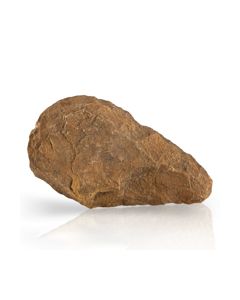 Paleolithic hand axe
Paleolithic hand axePrehistoric stone tool. It was the universal tool of the older Stone age and could be used as a borer or a cutter. From a Swiss museum collection. Found in Algeria, North Africa.
Price: on request Large Paleolithic hand axe
Large Paleolithic hand axePrehistoric stone tool. It was the universal tool of the older Stone age and could be used as a borer or a cutter. From a Swiss museum collection. Found in Foggaret Ezzaouia, Algeria, North Africa.
Price: on request Paleolithic hand axe
Paleolithic hand axePrehistoric stone tool. It was the universal tool of the older Stone age and could be used as a borer or a cutter. From a Swiss museum collection. Found in the Algerian Sahara desert.
Price: on request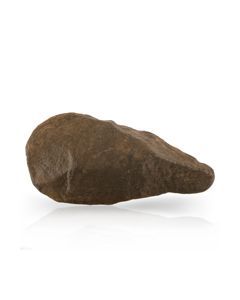 Paleolithic hand axe
Paleolithic hand axePrehistoric stone tool. It was the universal tool of the older Stone age and could be used as a borer or a cutter. From a Swiss museum collection. Found in the Algerian Sahara desert.
Price: on request Paleolithic hand axe
Paleolithic hand axePrehistoric stone tool. It was the universal tool of the older Stone age and could be used as a borer or a cutter. From a Swiss museum collection. Found in Morocco, North Africa.
Price: on request Paleolithic hand axe
Paleolithic hand axePrehistoric stone tool. It was the universal tool of the older Stone age and could be used as a borer or a cutter. From a Swiss museum collection. Found in Erg Mehedjibat, Algeria, North Africa.
Price: on request Large Paleolithic hand axe
Large Paleolithic hand axePrehistoric stone tool. It was the universal tool of the older Stone age and could be used as a borer or a cutter. From a Swiss museum collection. Found in Erg Mehedjibat, Algeria, North Africa.
Price: on request Huge Paleolithic hand axe
Huge Paleolithic hand axePrehistoric stone tool. It was the universal tool of the older Stone age and could be used as a borer or a cutter. From a Swiss museum collection. Found in Morocco, North Africa.
Price: on request Paleolithic hand axe
Paleolithic hand axePrehistoric stone tool. It was the universal tool of the older Stone age and could be used as a borer or a cutter. From a Swiss museum collection. Found in Morocco, North Africa.
Price: on request Large prehistoric hand axe
Large prehistoric hand axeMassive Paleolithic stone tool. It was the universal tool of the older Stone age and could be used as a borer or a cutter. From a Swiss museum collection. Found in Algeria, North Africa.
Price: on request Paleolithic hand axe or borer
Paleolithic hand axe or borerPrehistoric stone tool. It was the universal tool of the older Stone age and could be used as a borer or chisel. From a Swiss museum collection. Found in the Algerian Sahara desert.
Price: on request Paleolithic hand axe
Paleolithic hand axePrehistoric stone tool. It was the universal tool of the older Stone age and could be used as a borer or a cutter. From a Swiss museum collection. Found in Erg Mehedjibat, Algeria, North Africa.
Price: on request Large Paleolithic hand axe
Large Paleolithic hand axePrehistoric stone tool. It was the universal tool of the older Stone age and could be used as a borer or a cutter. From a Swiss museum collection. Found in Foggaret Ezzaouia, Algeria, North Africa.
Price: on request Paleolithic hand axe
Paleolithic hand axePrehistoric stone tool. It was the universal tool of the older Stone age and could be used as a borer or a cutter. From a Swiss museum collection. Found in Algeria, North Africa.
Price: on request Paleolithic hand axe
Paleolithic hand axePrehistoric stone tool. It was the universal tool of the older Stone age and could be used as a borer or a cutter. From a Swiss museum collection. Found in Algeria, North Africa.
Price: on request Paleolithic hand axe
Paleolithic hand axeSmall prehistoric stone tool. It was the universal tool of the older Stone age and could be used as a borer or a cutter. From a 100 year old museum collection.
Price: on request Paleolithic hand axe
Paleolithic hand axePrehistoric stone tool. It was the universal tool of the older Stone age and could be used as a borer or a cutter. From a Swiss museum collection. Found in Ouarzazate, Morocco.
Price: on request Paleolithic hand axe
Paleolithic hand axeSmall prehistoric stone tool. It was the universal tool of the older Stone age and could be used as a borer or a cutter. From a 100 year old museum collection.
Price: on request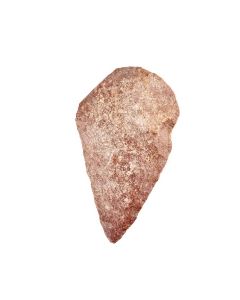 Paleolithic hand axe
Paleolithic hand axeThe universal tool of the older Stone age. It could be used as a borer or a cutter. Approx. 500,000 to 200,000 BC.
Price: on request Kleiner Faustkeil, Homo Neanderthalensis
Kleiner Faustkeil, Homo NeanderthalensisKleiner Faustkeil oder Hammer, mittleres Paläolithikum. Bearbeitung durch Neandertaler, 60000 v. Chr. bis 40000 v. Chr.
Price: on request Pfeilspitze, Paläolithikum
Pfeilspitze, Paläolithikum35.000 bis 30.000 v.Chr., Jungpaläolithikum. Letzte Phase der Altsteinzeit, Homo sapiens.
Price: on request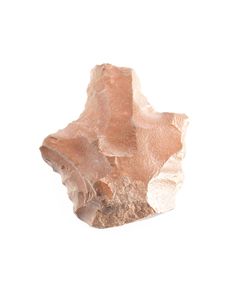 Pfeilspitze, Paläolithikum
Pfeilspitze, Paläolithikum35.000 bis 30.000 v.Chr., Jungpaläolithikum. Letzte Phase der Altsteinzeit, Homo sapiens.
Price: on request Pfeilspitze, Spätpaläolithikum bis Mesolithikum
Pfeilspitze, Spätpaläolithikum bis MesolithikumPfeilspitze aus Flintstein. Asymmetrische Grundform, zweiseitig Schneiden, breiter Schaft. Fund aus Assens, Dänemark.
Price: on request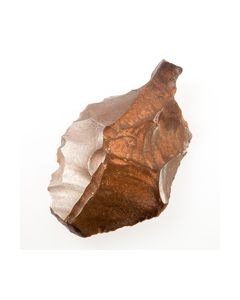 Paläolithische Pfeilspitze oder Speerspitze
Paläolithische Pfeilspitze oder Speerspitze35.000 bis 30.000 v. Chr., Jungpaläolithikum. Letzte Phase der Altsteinzeit, Homo sapiens. Patinierter Flintstein mit deutlichen Bearbeitungsspuren.
Price: on request Großer Faustkeil des Homo Erectus
Großer Faustkeil des Homo ErectusAltsteinzeit, um 200.000 v. Chr. Deutliche Spuren grober Werkzeugbearbeitung durch Homo Erectus. Schweres Objekt mit dunkler Patina.
Price: on request Großer Faustkeil des Homo Erectus
Großer Faustkeil des Homo ErectusAltsteinzeit, um 200.000 v. Chr. Deutliche Spuren grober Werkzeugbearbeitung durch Homo Erectus. Schweres Objekt mit dunkler Patina.
Price: on request Paläolithische Pfeilspitze oder Speerspitze
Paläolithische Pfeilspitze oder Speerspitze35.000 bis 30.000 v. Chr., Jungpaläolithikum. Letzte Phase der Altsteinzeit, Homo sapiens. Patinierter Flintstein mit deutlichen Bearbeitungsspuren.
Price: on request Paläolithische Pfeilspitze oder Speerspitze
Paläolithische Pfeilspitze oder Speerspitze35.000 bis 30.000 v. Chr., Jungpaläolithikum. Letzte Phase der Altsteinzeit, Homo sapiens. Patinierter Flintstein mit deutlichen Bearbeitungsspuren.
Price: on request Paläolithische Pfeilspitze oder Speerspitze
Paläolithische Pfeilspitze oder Speerspitze35.000 bis 30.000 v. Chr., Jungpaläolithikum. Letzte Phase der Altsteinzeit, Homo sapiens. Patinierter Flintstein mit deutlichen Bearbeitungsspuren.
Price: on request Paläolithische Pfeilspitze oder Speerspitze
Paläolithische Pfeilspitze oder Speerspitze35.000 bis 30.000 v. Chr., Jungpaläolithikum. Letzte Phase der Altsteinzeit, Homo sapiens. Patinierter Flintstein mit deutlichen Bearbeitungsspuren.
Price: on request Paläolithische Pfeilspitze oder Speerspitze
Paläolithische Pfeilspitze oder Speerspitze35.000 bis 30.000 v. Chr., Jungpaläolithikum. Letzte Phase der Altsteinzeit, Homo sapiens. Patinierter Flintstein mit deutlichen Bearbeitungsspuren.
Price: on request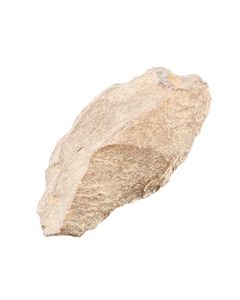 Faustkeil des Homo Erectus, Palöolithikum
Faustkeil des Homo Erectus, PalöolithikumAltsteinzeit, um 200.000 v. Chr. Deutliche Spuren grober Werkzeugbearbeitung durch Homo Erectus. Schweres Objekt mit dunkler Patina.
Price: on request Großer Faustkeil des Homo Erectus
Großer Faustkeil des Homo ErectusAltsteinzeit, um 200.000 v. Chr. Deutliche Spuren grober Werkzeugbearbeitung durch Homo Erectus. Schweres Objekt mit dunkler Patina.
Price: on request Großer Faustkeil des Homo Erectus
Großer Faustkeil des Homo ErectusAltsteinzeit, um 200.000 v. Chr. Deutliche Spuren grober Werkzeugbearbeitung durch Homo Erectus. Schweres Objekt mit dunkler Patina.
Price: on request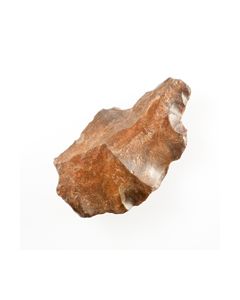 Pfeilspitze oder Speerspitze aus der Altsteinzeit
Pfeilspitze oder Speerspitze aus der Altsteinzeit35.000 bis 30.000 v. Chr., Jungpaläolithikum. Letzte Phase der Altsteinzeit, Homo sapiens. Patinierter Flintstein mit deutlichen Bearbeitungsspuren.
Price: on request

